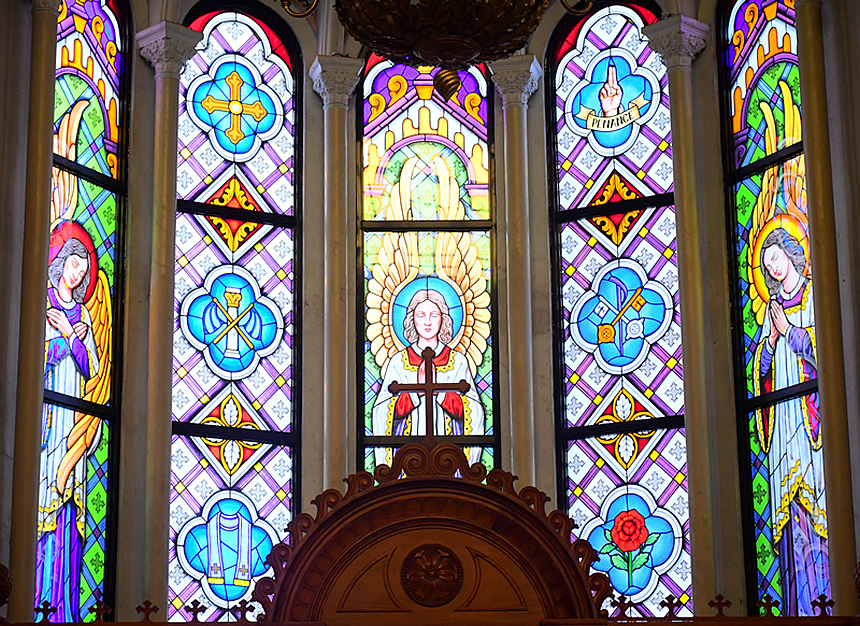

Sub Rosa: The Rose as a Symbol for Confession
Visitors to the Cubao Cathedral who take time to look upward above the confessionals are rewarded with a subtle, beautiful discovery: a stained-glass window adorned with symbols of the Sacrament of Reconciliation. Amid the expected emblems—a key symbolizing absolution, a stole representing the priestly authority—one symbol stands out: a delicate rose.
At first, the rose seems like an unlikely choice. We often associate it with romance, martyrdom, or the Blessed Virgin Mary. But its meaning in this context is drawn from a more ancient source, and it reminds us of a sacred and often forgotten aspect of confession: secrecy.
The connection goes back to Roman mythology. According to legend, Cupid gifted a rose to Harpocrates, the god of silence, as a bribe to keep quiet about Cupid’s illicit relationship with Venus. This story gave rise to a tradition where roses were suspended above council meetings or private gatherings to symbolize that all spoken within was to remain confidential. From this practice emerged the Latin phrase sub rosa—literally,“under the rose"—which means that something is to be kept secret.
Thus, the rose became an enduring symbol of secrecy and discretion. In the Christian tradition, this symbolism found an even more sacred application: the Seal of Confession.
The Seal of Confession is inviolable. When a penitent kneels before the priest, they are not speaking merely to a man but are confessing to God Himself through His ordained minister. No matter the gravity of the sin, the priest is bound by sacred law never to reveal anything heard during confession. The Catechism of the Catholic Church affirms:
“The secrecy of the sacrament is inviolable; therefore it is a crime for a confessor in any way to betray a penitent by word or in any other manner.” (CCC 2490)
In this light, the rose above the confessionals in Cubao Cathedral is not merely decorative. It is a profound visual reminder that confession happens sub rosa—beneath the sacred veil of divine secrecy. Here, sins are exposed not to the world, but to the healing mercy of Christ, and they are forever sealed by the sacred silence of the Church.
There is something beautifully fitting that, in Cubao Cathedral, we not only go to confession figuratively under the rose—we also do so quite literally, beneath the stained glass rose that crowns the place where mercy is dispensed. It is as if the very architecture whispers to every penitent: “Speak freely. Trust deeply. You are hidden within the heart of God.”
In a world obsessed with exposure and the constant unveiling of secrets, the rose calls us back to a deeper reality: that God’s mercy covers our sins with a silence born not of shame, but of love.


























